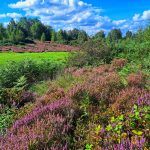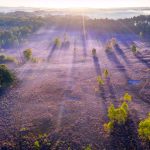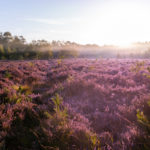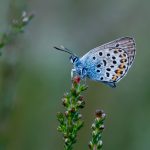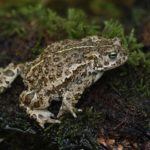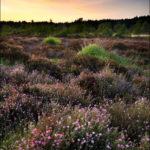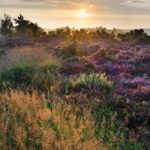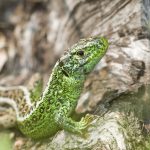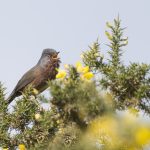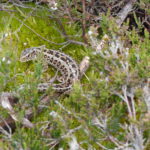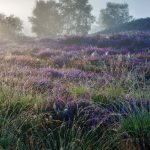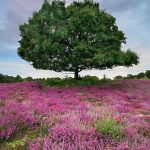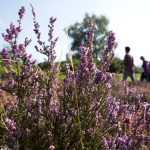The heavenly heathers of the South Downs
August 12, 2024
It’s one of the most beautiful and mysterious sights in the south of England – a huge shimmering carpet of purple and pink heathers under a blue summer sky.
While heathers are more often associated with the UK’s rugged uplands, the lowlands of the South Downs National Park are one of the last great bastions of this amazing habitat in the busy south east.
Late summer, in August and early September, is when the magic really happens on the heathland as the heathers blossom into a cascade of captivating colours.
To mark World Photo Day on 19 August, the National Park is sharing some stunning images of South Downs heathland, which is a haven for 12 of 13 native amphibians and reptiles in the UK and also provides a refuge for rare, secretive birds such as the Dartford warbler and nightjar.
Olivia French, Heathlands Engagement Officer for the National Park, said: “Heathlands are actually as rare as the rainforest and we’re very lucky to still have around 40 sites in and around the South Downs National Park. Lowland heath was one of the reasons for the designation of the National Park, as it’s so incredibly rare.
“Without these refuges, some very specialist animals and plants would be lost forever, so it’s really important we all care for our heathlands.
“This is such a special time of year for heaths, so do get out and capture its beauty if you can on camera!
“Heathlands are especially sensitive to human disturbance, so a few tips to enjoy these sites include sticking to the paths to avoid trampling ground-nesting birds, keeping dogs on leads around livestock, no barbecues or fires, taking rubbish home and bagging and binning dog poo. Just soak up the serenity and leave no trace!”
Working with a range of partners, the National Park Authority has been working hard to help protect heathland since the National Park was created 2010. The Heathlands Reunited project successfully conserved and enhanced 23,825 hectares – or 18,000 football pitches – of lowland heath. An independent scientific assessment revealed the initiative had been “significant” in restoring the ecological condition of the habitat.
The current focus is on the heaths in the far north-west of the National Park around the Wealden Heath Special Protection Area in Hampshire. Working with partners, National Park rangers are helping to care for these sites through careful habitat management and engagement and there are early signs that a number of rare species, such as European nightjar and silver-studded blue butterflies, are flourishing.
If you have an amazing summery heathland image, why not enter the National Park’s photo competition? The theme is “Stunning Seasons of the South Downs” and there are several prizes of £100. The deadline is 31 October and more details can be found here.
For ideas on heathland walks visit the National Park’s walking hub here.

